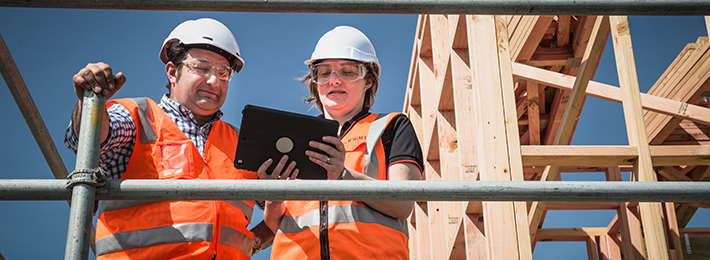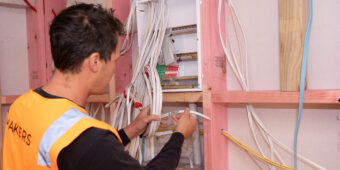Risk control
27 Jun 2017, Featured, Prove Your Know How, Safety

Under the Health and Safety at Work Act 2015, you need to protect your workers and anyone else on site by managing risk – here’s some tips to help you manage your risk-identification protocols
Creating a healthy and safe work environment is not only an important legal responsibility for an employer, it can also lead to better productivity, better relations with contractors and happier workers.
Section 30 of the Health and Safety at Work Act 2015 requires employer’s to eliminate risks, so far as is ‘reasonably practicable’.
Reasonably practicable means considering the level of risk, what you know about how to control it and the cost in relation to the level of risk. This does not mean that if the control is too expensive it can be dispensed with: where the risk of death or serious injury exists, the question should be whether the job is worth the risk.
If you can’t eliminate the risk, then you must minimise it as far as is reasonably practicable. You need a process for assessing and managing the risks of all hazards, but not every hazard requires a formal process.
The Five-Steps to Managing Risk
If you are just starting out, begin with the major risks that could cause serious injury or death. The following steps will help create your own risk management strategies:
- Identify
- Assess the risk level of each hazard identified.
- Control the risk to reduce the harm and its severity.
- Reassess the level of risk for each hazard.
- Review and monitor that controls are working and risk levels are acceptable.
- Identify
Walk around your workplace with a staff member and identify what could seriously harm the health or safety of workers and others. Remember to consider both immediate safety hazards, such as falls, and gradual health hazards, like asbestosis.
- Assess
Once you have identified the hazards, assess the level of risk for each. This is a great time to talk to your workers, as they are your greatest source of information during the risk assessment process.
They know and understand the jobs, how they can suffer potential harm and the controls that are/aren’t working. Your workers will often have great ideas for improvement, so just ask! To work out the level of risk, determine how likely it is to occur and what the possible severity of injuries could be. Using a risk matrix as a guide can be useful.
- Control
Once you have identified the level of risk, you must do what is reasonable and practical to eliminate it. Where it can’t be eliminated, minimise it by choosing the best controls for the situation – the better the control, the lower the risk.
Common controls, such as Codes of Practice, guidelines and standard procedures can be applied for common risks. Remember to talk to subbies and anyone else on site about risks resulting from your work.
If you can’t eliminate a common risk, then apply common control measures. Use a risk register to record your common hazards and controls. If you can’t eliminate a specified risk and it is covered by regulations, or is high-risk, apply the ‘hierarchy of controls’ and use a Task Analysis or a Safe Work Method Statement.
Controls can be ordered from most effective to least. This is called the “Hierarchy of Controls”. The most effective control is one that eliminates the risk, the least effective control is one that just minimises it, such as using PPE.
Substitute, isolate and engineer are classed as being as equally effective. You will often need to use multiple controls on a single risk.
- Reassess
After putting controls in place, go back and reassess the level of risk. You may not always get your controls right the first time. If the new level of risk is still too high, go back and put different controls in place, then reassess.
- Review and Monitor
You’ll need to review your controls regularly to:
- Ensure your planned controls are being used.
- Check that controls are effective.
- Ensure your risk level estimate is correct.
- Check in with workers if controls are convenient and effective.
- Monitor exposure to health.
- Identify new or different work activities and risks.
- Consider if stronger controls are now possible.
Communicate the risks
Once your risks are identified and your controls are in place, make sure you document them in an easy-to-understand manner in a hazard/risk register. This summary of site hazards and steps taken to control them should be available at all times for PCBUs to use when inducting new contractors, sub-contractors or visitors to a site. A Site Job Hazard and Risk Register can be downloaded for free at
Want more help? Site Safe offers a free Risk Management guide designed specifically for SMEs, as well as a new Risk Management course, which will be open for bookings from August. To enroll, or to download the guide, go to www.sitesafe.org.nz.
Register to earn LBP Points Sign in
3 Comments
Leave a Reply
You must be logged in to post a comment.




Risk management
Under the Health and Safety at Work Act 2015, you need to protect your workers and anyone else on site by managing risk – here’s some tips to help you manage your risk-identification protocols
take a walk round site every morning to assess